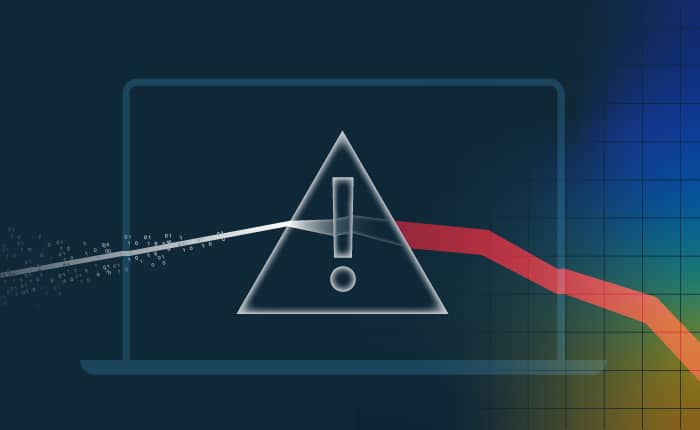Businesses are experiencing risk every day, especially when it comes to managing data sprawl, privacy programs, and regulatory compliance. Any organization handling sensitive data for clients, customers, or other stakeholders must protect and use it responsibly to mitigate harms ranging from statutory noncompliance to damage from a personal data breach. Proactive data risk management and cybersecurity practices are vital to building brand trust and securing stakeholder data from harm.
Gartner defines risk management as “the management of granular business risks between the security governance layer and the enterprise risk management layer.” This definition covers a wide range of processes, but we’re zooming in on data risk management as it relates to overall business risk.
What is the Role of Data Risk Management?
In the age of personalization, when people fundamentally believe that privacy is a human right, businesses are focused on minimizing risk — be it in response to the changing economic climate, shifting regulatory requirements, or increasing competition.
The proliferation of digital technologies means businesses collect and store vast amounts of sensitive information, including personal data about customers and employees. Failure to adequately protect this personal information from incidents like data breaches, data loss, and other security risks can harm a company’s reputation and financial health.
On top of data security efforts, strengthening data privacy for collected personal information is a legal and ethical obligation and a crucial aspect of managing business risk in today’s digital landscape.
Data risk management roles include:
- Proactively assessing security risks and vulnerabilities to minimize business risks related to data breaches, data loss, and more
- Improving data privacy decision-making and effectively managing a comprehensive privacy program
- Conducting Data Protection Impact Assessments/Privacy Impact Assessments (DPIAs/PIAs) as needed
- Setting effective and efficient business data minimization and retention policies
- Closely monitoring privacy program deadlines to avoid regulatory risks, and tracking company-specific privacy trends to prepare for whatever comes next
Mitigating Specific Types of Data Risks
Data risk management and mitigation should be handled by a designated team, but it’s an issue that deserves attention company-wide. Read on to discover ways that security, privacy, legal, and general teams can support comprehensive company data risk management and protection.
- Introduce strong, company-wide access control measures like multi-factor authentication (MFA) and follow the principle of least privilege
- Promptly update software and systems with security patches and upgrades
- Train employees on data security best practices to help identify and avoid phishing scams and maintain password hygiene
- Encrypt sensitive data and personally identifiable information (PII)
- Implement firewalls and intrusion detection/prevention systems
- Regularly back up data and test restoration procedures
- Conduct regular data risk assessments, DPIAs, and vulnerability scans to snuff out malware and shut down shadow IT across the organization’s tech stack
- Develop and maintain an incident response plan for data breaches and security incidents
- Create a plan of action for managing risks associated with social media and data analytics
How to Perform a Data Risk Assessment
Running a proactive risk management program means staying vigilant by performing ongoing risk assessments and DPIAs/PIAs.
- Manual data risk assessment process:
- Inventory sensitive data
- Assign data classifications
- Cross-functional assessment team decides which sensitive data to prioritize
- Review related security and privacy controls
- Fulfill assessment and document privacy/security shortcomings and potential risks
- General DPIA/PIA process:
- Assess the personal information — mundane vs sensitive — being collected, its collection purpose, and the ethical implications
- Determine the nature and benefits of the processing activity
- Consider how data may change or switch hands, including the possibility of it being shared outside the organization
- Identify if the team can ensure fair play through organizational, contractual, and technical controls, including through appropriate security safeguards
- Take steps to mitigate discovered risks and correct operational deficiencies
- Set a time or guideline on when to revisit the assessment — for example, if there’s a material change in the activity
- Periodically reassess the effectiveness of the organization’s DPIA/PIA process.
Data Risk Management Best Practices?
Managing data risk is a serious, anxiety-inducing process for many organizations, but following best practices and implementing a proactive approach can help reduce issues and chances for error.
A non-exhaustive list of best practices includes:
- Implement an enterprise risk management strategy that spans the entire company
- Organizations must remember they’re responsible for the protection of all sensitive data they collect and hold
- Continually reassess organizational data protection practices and infrastructure
- Ensure data quality and accuracy
- Incorrectly collecting inaccurate or off-limits data may cause legal issues, a mass increase in data subject requests (DSRs), or more
- Find privacy partners to help automate risk management workflows with SaaS solutions and other information security software
- Develop, clearly communicate, and educate internal teams on policies and procedures for pre-empting and managing data risks
- Regularly review and update risk mitigation strategies to defend against new cyberattacks and vulnerabilities
How Artificial Intelligence is Impacting Data Risk Management
Artificial Intelligence (AI) is already revolutionizing data risk management by improving data security, preventing cyber threats, and reducing the risk of data breaches.
AI is impacting data risk management workflows related to:
- Predictive Analytics
- Predictive analytics proactively help organizations identify and mitigate potential data risks. Machine learning algorithms can analyze large datasets to detect possible security threats and allow organizations to prevent data breaches.
- Fraud Detection
- Machine learning algorithms power real-time fraud detection by analyzing datasets to identify unusual patterns indicating possible fraudulent activity.
- Cybersecurity
- AI can detect and prevent cyber threats by analyzing network traffic and security logs to identify suspicious activity.
- Compliance
- Organizations might use AI to assist in regulatory operations by recognizing the need to protect sensitive information and actioning necessary compliance steps.
Proactive organizations are realizing the power AI holds, but they need to be aware of related challenges and considerations. One major concern is algorithmic bias which can result in inaccurate risk assessments if the AI is trained on incomplete or biased datasets. It’s crucial to train algorithms using comprehensive, diverse datasets to avoid biased analyses.
Financial Services Industry: A High-Risk Data Target
Organizations operating in the financial services industry face uniquely high levels of data security risk. The handling of sensitive consumer financial data can be especially lucrative for threat actors.
Equifax, a major credit reporting agency, suffered a data breach in 2017 exposing the personal and financial information of over 140 million individuals. The breach resulted in significant financial and reputation damage to the company.
Because of their heightened risk level, financial services companies should dedicate extra attention to data risk management and protection and upholding organized data quality processes. It’s vital they proactively review current risk management strategies, identify operational gaps, and resolve those issues before an incident occurs.
To proactively and comprehensively manage enterprise data, these companies must find a SaaS privacy partner that leverages high levels of automation to remove human error, build brand trust, and outsmart risk.
Key Stakeholders Involved in Data Risk Management
Data risk management is a collaborative effort involving several key stakeholders within an organization. However, it’s important to note that every single employee should be considered a stakeholder when it comes to outsmarting data security risks
Chief Information Security Officers (CISOs) oversee an organization’s information security program. This includes identifying and mitigating data risks and working with other stakeholders like Chief Information Officers (CIOs), CEOs, COOs, CFOs, and any other C-suite members to establish policies and procedures for data risk management and ensure an organization’s data security practices are aligned with industry best practices.
It’s crucial for the entire C-suite to be involved in, or at least aware of the risk management decision-making process. Specifically, CIOs often work closely with CISOs to ensure secure and compliant data management and storage practices.
Additionally, cybersecurity professionals should be involved in the planning, implementation, and maintenance of the organization’s security infrastructure along with their work to ensure organizational data protection.
Data Risk Management Protects Critical Business Operations
Companies are handling impossibly large amounts of consumer data and can’t overlook comprehensive data risk management for enterprises.
Implementing proactive risk management workflows and a comprehensive risk mitigation strategy can help an organization understand its vulnerabilities and fill the gaps to avoid falling out of regulatory compliance, breaking the law, or losing stakeholder trust and brand loyalty.
Every day, data risk and business risk become closer to being synonymous, and enterprises must continue to audit, iterate, automate, and improve their risk management processes and overall strategies.

